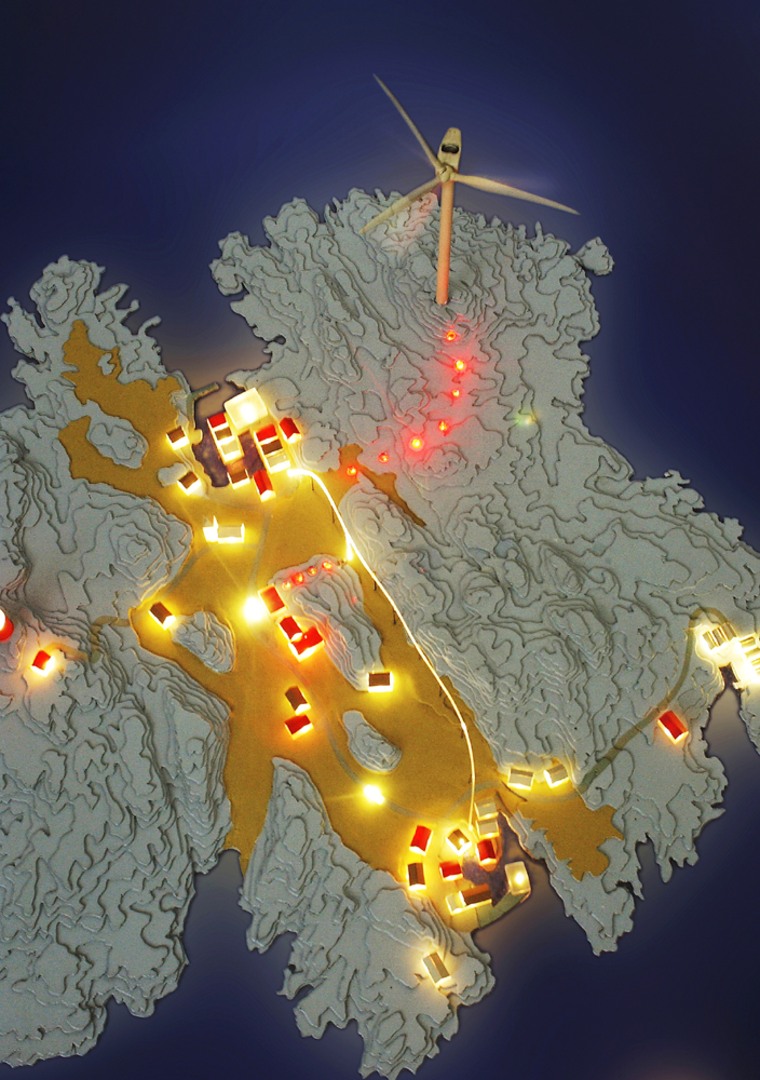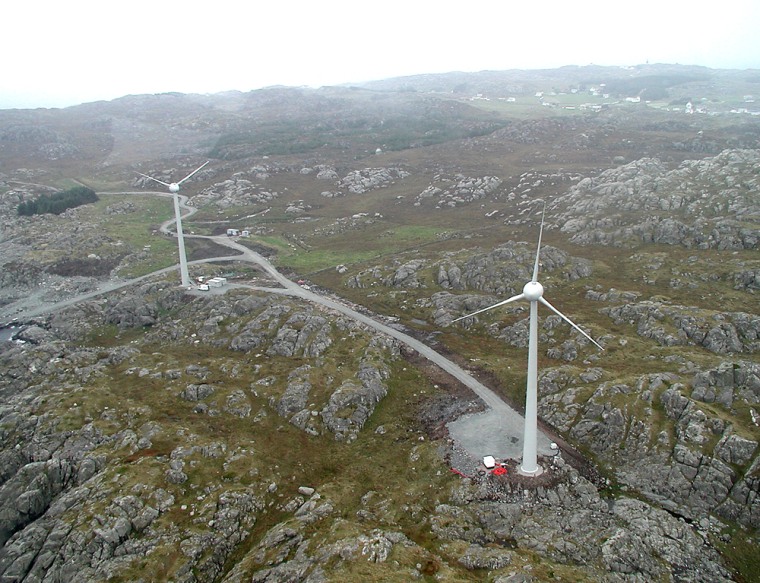A windblown island off Norway is being used to test ways of overcoming a big drawback of alternative energy: How to store it.
Such renewable energy sources as wind, waves and solar power provide a clean alternative to climate damaging fossil fuels and potentially dangerous nuclear power.
But sometimes the wind dies, the sea calms, and the sun doesn’t shine, leaving those who depend on them for power facing a blackout unless they have a backup supply.
Oslo-based Norsk Hydro ASA on Tuesday presented its project to test a combination of technologies, wind power and hydrogen fuel, to overcome that problem on the island of Utsira, off Norway’s western coast.
“It is the first full scale project of this type in the world,” said project manager Paal Otto Eide, whose company is leading the $5.8 million effort.
'Real customers' using technology
The company built two 600-kilowatt wind turbines to use with a hydrogen generator and a fuel cell in providing all the electricity for 10 homes on Utsira, Norway’s smallest municipality with just 240 residents.

“It is real customers who are going to cook... and watch TV with this electricity this summer,” said Joergen Rostrup, Norsk's vice president for new energy.
When it’s windy, which is usual in Utsira, about 11 miles from the mainland, the wind turbines will produce more electricity than needed by the 10 homes.
The excess power will be used to produce hydrogen fuel so a hydrogen combustion engine and a fuel cell make electricity at windless times. Some is also being sent to the mainland.
“What is important is to store the excess energy,” said Eide. “Utsira is a demonstration of what we could imagine as a hydrogen community in the future.”
Hydrogen, one of the most common elements on earth, is seen by many as a pollution-free fuel of the future, and is a key part of projects around the world, including tests of hydrogen powered cars.
It can be derived from such sources as natural gas or methane, or can be made by electricity — in this case from the wind turbines, in a process known as electrolysis that splits water into hydrogen and oxygen.
Export idea abroad?
The wind turbines and the hydrogen engine are already producing electricity on Utsira, 200 miles west of Oslo. The full switch from the traditional power grid is set for July 1 for the test, which will last two or three years.
Eide said many remote areas around the world depend on costly and polluting diesel generators for electricity, which could make an alternative, such as the wind and hydrogen supply, attractive.
“We want to prove that this is possible, not economically viable, but technically possible,” said Eide.
The Utsira trial follows energy and metals group Norsk Hydro’s earlier involvement in hydrogen projects for the transport sector, including a filling station on Iceland.
Norsk Hydro is a major oil and natural gas producer, and like many energy companies is preparing to also meet demand for alternative fuels. The group was founded in 1905 to produce mineral fertilizers by using electricity from its hydroelectric plant, hence the Hydro part of its name.
Norway, the world’s third largest oil exporter, produces virtually all its own electricity with hydroelectric plants.
Wind power has made big strides, especially in Denmark and Germany, and is the fastest-growing part of the European power industry due to government measures to curb emissions of greenhouse gases widely blamed for global warming.
Background on the project is online at
